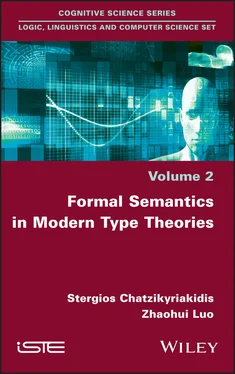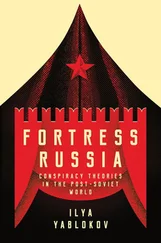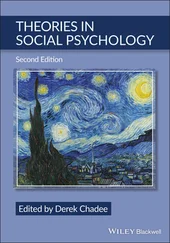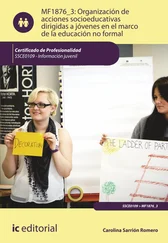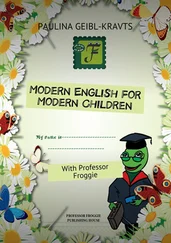122 114
123 115
124 116
125 117
126 118
127 119
128 120
129 121
130 122
131 123
132 124
133 125
134 127
135 128
136 129
137 130
138 131
139 132
140 133
141 134
142 135
143 136
144 137
145 138
146 139
147 140
148 141
149 142
150 143
151 144
152 145
153 146
154 147
155 148
156 149
157 150
158 151
159 152
160 153
161 154
162 155
163 156
164 157
165 158
166 159
167 160
168 161
169 162
170 163
171 164
172 165
173 166
174 167
175 168
176 169
177 170
178 171
179 172
180 173
181 175
182 176
183 177
184 178
185 179
186 181
187 182
188 183
189 184
190 185
191 187
192 188
193 189
194 191
195 192
196 193
197 194
198 195
199 196
200 197
201 198
202 199
203 200
204 201
205 202
206 203
207 204
208 205
209 206
210 207
211 209
212 210
213 211
214 212
215 213
216 214
217 215
218 216
219 217
220 218
221 219
222 220
223 221
224 222
225 223
226 225
227 226
228 227
229 228
230 229
231 231
232 232
233 233
234 234
235 235
236 236
Logic Linguistics and Computer Science Set
coordinated by
Christian Retoré
Volume 2
Formal Semantics in Modern Type Theories
Stergios Chatzikyriakidis
Zhaohui Luo

First published 2020 in Great Britain and the United States by ISTE Ltd and John Wiley & Sons, Inc.
Apart from any fair dealing for the purposes of research or private study, or criticism or review, as permitted under the Copyright, Designs and Patents Act 1988, this publication may only be reproduced, stored or transmitted, in any form or by any means, with the prior permission in writing of the publishers, or in the case of reprographic reproduction in accordance with the terms and licenses issued by the CLA. Enquiries concerning reproduction outside these terms should be sent to the publishers at the undermentioned address:
ISTE Ltd
27-37 St George’s Road
London SW19 4EU
UK
www.iste.co.uk
John Wiley & Sons, Inc.
111 River Street
Hoboken, NJ 07030
USA
www.wiley.com
© ISTE Ltd 2020
The rights of Stergios Chatzikyriakidis and Zhaohui Luo to be identified as the authors of this work have been asserted by them in accordance with the Copyright, Designs and Patents Act 1988.
Library of Congress Control Number: 2020943853
British Library Cataloguing-in-Publication Data
A CIP record for this book is available from the British Library
ISBN 978-1-78630-128-4
To communicate linguistically is to convey meaning. Semantics is the academic discipline that analyzes meaning. In this book, we study natural language semantics formally in the framework of modern type theories (MTTs). Examples of MTTs include Martin-Löf’s predicative type theory (Martin-Löf 1984; Nordström et al . 1990) and the impredicative type theories – unifying theory of dependent types UTT (Luo 1994) and pCIC (Coq 2010). MTTs offer a foundational framework that was not available in the study of formal semantics until Ranta’s work in the early 1990s when he applied Martin-Löf’s type theory to formal semantics (Ranta 1994). In the past decade, the development of formal semantics in MTTs (MTT-semantics for short) has shown that MTTs are powerful alternatives to, and arguably more advantageous than, Church’s simple type theory (Church 1940) as employed in Montague semantics (Montague 1974).
MTTs have rich type structures and, at the same time, are specified by means of proof-theoretic natural deduction rules. Therefore, they provide powerful tools in formal semantics, on the one hand, and have the appeal of being supported by a proof-theoretic theory of meaning, on the other hand. The former allows one to study a wide range of linguistic features, some of which have proved difficult to describe adequately in the Montagovian setting. The latter not only provides a solid proof-theoretic foundation for MTT-semantics but also leads to practical computer-assisted reasoning tools supported by the existing proof technology. These two aspects can be summarized by saying that MTT-semantics is both model-theoretic and proof-theoretic, a thesis that was put forward by the second author in Luo (2014) and further elaborated in Luo (2019a). This makes MTTs a promising and attractive semantic framework that is unique: such a framework was not available in traditional logical settings and the MTT-framework offers new perspectives on natural language semantics.
Learning MTTs can be laborious. This is partly because MTTs incorporate several new concepts that even traditional logicians may find difficult to comprehend at the beginning, let alone the linguists who apply logics to formal semantics. Therefore, in this book, besides studying MTT-semantics, we shall try our best to introduce the basics of MTTs informally: the explanations will be rigorous with examples from linguistic semantics. It is our hope that this will make it easier to understand and study MTT-semantics.
This book consists of the following seven chapters, where Chapters 1, 2, 3, sections 7.1and 7.2are mainly written by Luo, and Chapters 4, 5, 6and section 7.3are mainly written by Chatzikyriakidis.
– Chapter 1, Type Theories and Semantic Studies, starts with an overview of the historical development of type theories and a discussion on how to use a type theory as a foundational language for formal semantics. We then briefly describe Montague semantics, which is based on simple type theory, 1 and MTT-semantics, and compare them by means of some simple examples. This serves to introduce the basics of MTT-semantics in a very sketchy manner, together with some summary notes on its historical development, and allows us to outline several important merits of employing MTTs as a foundational semantic framework.
– Chapter 2, Modern Type Theories, consists of an informal but rigorous and precise introduction to MTTs, mainly for linguistic semanticists. In order to introduce the basic concepts in MTTs, we use explanatory examples to show how these may be employed in semantic constructions and, in most cases, we present their formal rules in appendices (mainly for completeness). Special attention is paid to several mechanisms that are particularly important for MTT-semantics, including coercive subtyping (Luo 1997), signatures (Luo 2014) and linguistic universes (Luo 2011b; Chatzikyriakidis and Luo 2012). We shall also give a complete formal presentation of the type theories used in this book, which is based on various studies (Luo 2014, 2019a), both for completeness and for reference in future work.
– Chapter 3, Formal Semantics in Modern Type Theories, is a central chapter that explicates several important features of MTT-semantics and shows that the MTT-semantic approach is viable and coherent, on the one hand, and provides flexible and powerful mechanisms for adequate semantic interpretations, on the other hand. Some features are discussed in depth: the CNs-as-types paradigm (Ranta 1994; Luo 2012a), subtyping in MTT-semantics (Luo 2009c, 2012b) and propositional forms of judgmental interpretations (Xue et al. 2018). As a case study for MTT-semantics, we study semantics of adjectival modification according to a traditional classification of adjectives into intersective, subsective, privative and non-committal adjectives, and investigate how such different adjectival modifications can be modeled adequately in the CNs-as-types paradigm. 2 This case study, together with the next two chapters, illustrates how the rich type structure in MTTs provide fruitful tools for modeling various linguistic features.
Читать дальше
